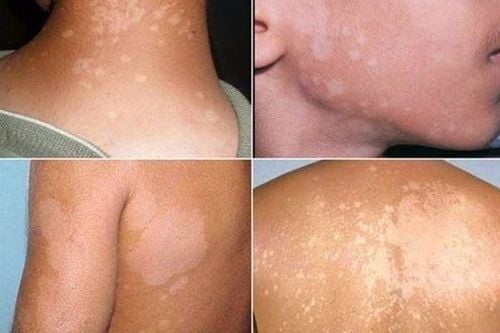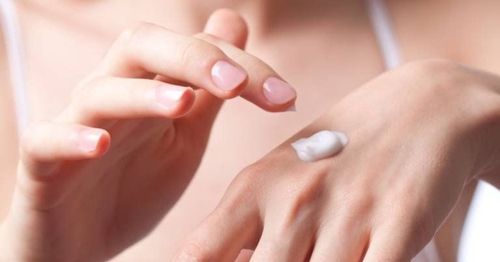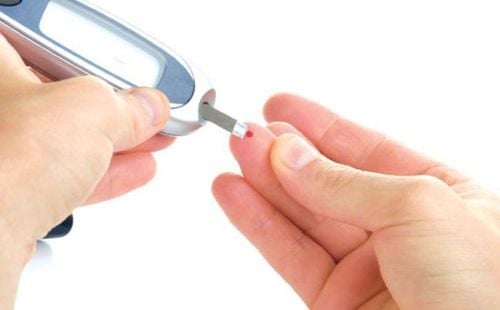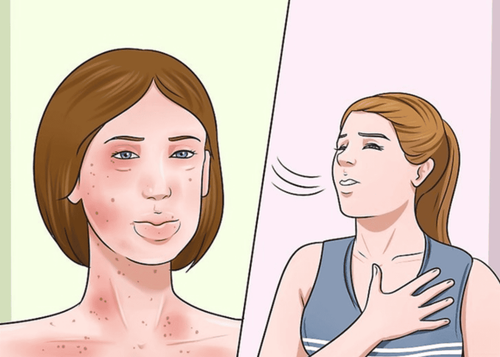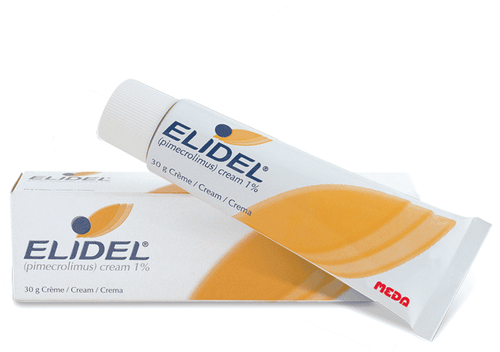This is an automatically translated article.
The article was professionally consulted with Specialist Doctor I Tran Van Sang - Dermatologist - Department of Medical Examination & Internal Medicine - Vinmec Da Nang International General Hospital.1. Atopic dermatitis and atopic dermatitis drugs
Atopic dermatitis is a common disease in children, most often at the age of 2 months to 2 years, more common in boys than girls. Atopic dermatitis is related to genetic factors, immune disorders in the body, elevated blood IgE, or it may be due to a disorder in the production of filagrin, loricin and other substances that bind skin cells that make the skin easier Dehydration causes dry skin.Atopic dermatitis is a chronic, progressive disease with many acute attacks interspersed with periods of remission. The trigger for the acute episode may be environmental. Symptoms of the disease are acute or chronic inflammatory skin lesions, much itching, specifically:
Acute dermatitis stage: the basic lesions are red, papules, vesicles, without scales. The edematous skin is raised higher than the normal skin, fluid, scaly. There may be scratches caused by scratching, bacterial, viral, and fungal infections. The disease is usually localized in the convex areas of the face such as forehead, cheeks, chin, or may spread to the whole body, limbs. Chronic stage is thick, dark, well-demarcated skin, painful fissures lichenification. Lesions are common in the large folds of the hamstrings, elbows, sides of the neck, grooves behind the ears, wrists, and ankles. Atopic dermatitis medications include topical and oral/injectable medications.
Oral/injectable medicines include:
Antihistamines to relieve itching Evidence shows that 95% of patients with atopic dermatitis have Staphylococcus aureus) Corticosteroids: Consider when using, when used, should only be used in the acute phase with a short course of treatment. day. Topical drugs for atopic dermatitis include drugs such as antiseptic solutions and reducing secretions (2% eosin solution, 0.25-2%). ...

2. Note when using topical atopic dermatitis
Topical drugs for atopic dermatitis include drugs with immunomodulatory effects right at the damaged skin (including 2 main types: Corticoids and non-corticoids) and topical moisturizers for the skin.2.1. Topical atopic dermatitis with corticosteroids Topical atopic dermatitis with corticosteroids is the first choice in the treatment of atopic dermatitis. This medicine can be used by both adults and children. Corticosteroids are classified according to their effectiveness (including 7 groups of levels from least strong to super strong). Weakly potent (eg, desonide 0.05%; hydrocortisone 2.5% ointment) are used in young children or mildly ill patients. Atopic dermatitis should be applied 1 or 2 times daily, once at night before bed and another time during the day, for 2-4 weeks, should only be applied to the symptomatic areas.
If your atopic dermatitis is moderate, more potent topical corticosteroids (such as fluocinolone 0.025%; triamcinolone 0.1%; betamethasone dipropionate 0.05%) should be used. In particular, severe, acute patients can use very strong corticosteroids for a maximum of 2 weeks. After that, use less effective topical inflammatory drugs until the damage is gone. Note, each type of topical corticosteroid is suitable for different skin areas, do not apply medicine for thick skin such as hands and feet to thin skin such as facial skin. Since thin areas of skin such as the face and large and small folds are the areas most likely to experience atrophy with corticosteroids, for these areas you can use topical medications such as 0.05% desonide ointment.
Topical drugs with atopic dermatitis containing corticosteroids are highly effective immediately for atopic dermatitis but are accompanied by many dangerous side effects if used for a long time such as skin atrophy, vasodilation, acne, stretch marks. skin (striations), spider veins (telangiectasia), perioral dermatitis (perioral), acne-like rash or rosacea, etc. Therefore, consultation and close monitoring is required. by the treating doctor, the patient must not arbitrarily use nor change the dose arbitrarily.
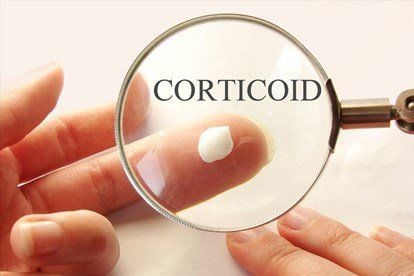
Tacrolimus content 0.1% is used for people over 15 years old, and tacrolimu 0.03% is used for children or people who are intolerant to 0.1%. If the patient is intolerant of tacrolimus, an alternative to pimecrolimus can be used. Note that tacrolimus ointment and pimecrolimus cream are contraindicated in children under 2 years of age
Use TCI instead of topical corticosteroids in the following cases: resistant to corticosteroids, lesions in thin skin areas (such as facial skin, wrinkles). inguinal, anal), patients who have used topical corticosteroids for a long time or have had side effects of corticosteroids. Applying TCI twice a day has a good effect on reducing inflammation. Furthermore, TCI is the preferred drug used in the stable phase of the disease at a dose 2-3 times/week to prevent recurrence. The most common side effects of this topical atopic dermatitis medication are pain at the site of application, and a burning or stinging sensation.
2.3. Skin moisturizing products Topical moisturizers for the skin are also important in treating the dry symptoms of atopic dermatitis. Because dry skin is not only a symptom, it is also a part of the disease-causing mechanism and side effects when using other topical atopic dermatitis. Moisturizing the skin is an important factor in reducing symptoms and limiting recurrence.
There are many skin moisturizing products that include many forms such as cream, milk, ointment, oil or bath form. How to use moisturizer and bathe as follows:
Apply moisturizer to dry skin. The number of times to apply depends on the skin area, depending on the season (eg, hot and humid summer weather, apply two to three times a day, winter low air humidity should apply more times). However, it should be applied at least 2-3 times a day, especially the time after bathing. You should continue to apply moisturizer long-term even after your symptoms have subsided. Shower with moderately warm water for no more than 10 minutes. Do not use too hot bath water, limit the use of scented soaps. After bathing, use a dry towel to gently wipe, do not wipe vigorously and immediately apply moisturizer to the skin. Atopic dermatitis is a disease that is complicated to treat and often requires medication due to the disease or recurrence. Patients need to strictly follow the instructions of the doctor and pharmacist to minimize the possible unwanted side effects.
Follow Vinmec International General Hospital website to get more health, nutrition and beauty information to protect the health of yourself and your loved ones in your family.
Please dial HOTLINE for more information or register for an appointment HERE. Download MyVinmec app to make appointments faster and to manage your bookings easily.






